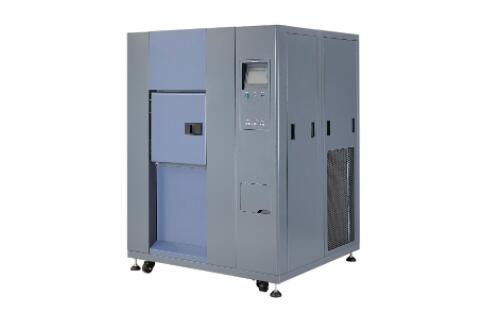Test standard and process of cold and hot shock test
Date:2022-01-25 16:00:00 Views:4020
Cold and hot shock test, also known as temperature shock test or high and low temperature shock test, is used to assess the adaptability of products to the rapid change of ambient temperature. It is an indispensable test in the identification test of equipment design finalization and routine test in batch production stage. In some cases, it can also be used for environmental stress screening test. It can be said that the frequency of application of cold and hot shock test box in verifying and improving the environmental adaptability of equipment is second only to vibration and high and low temperature test.
objective
In fact, as a tool, the cold and hot shock test box is used for different purposes in different stages of product development:
1. The engineering development stage can be used to find the design and process defects of products;
2. Provide basis for product finalization or design appraisal and acceptance decision in batch production stage;
3. When applied as environmental stress screening, the purpose is to eliminate early faults of products.
Therefore, when compiling the environmental test outline or screening outline, test report or screening report at different stages of the development process, the test purpose of cold and hot shock test should be specified, and it is not suitable to express vague or general.

Requirements for cold and hot shock test chamber:
High temperature box and low temperature box are used for cold and thermal shock test to provide the ambient temperature at which the test sample can withstand the sharp change of ambient air temperature
The requirements for high temperature area shall comply with GJB150 3-86 requirements specified in Chapter * 3 of environmental test methods for equipment high temperature test
The requirements for low temperature zone shall comply with GJB150 4-86 environmental test methods for equipment - low temperature test.
The cold and hot shock box provides high-temperature test part and low-temperature test part, which shall comply with GJB150 respectively 3-86 and GJB150 Requirements specified in articles of chapter * 3 of 4-86.
The volume of the test chamber shall ensure that the temperature of the test chamber can reach GJB150 after the test sample is placed in the test chamber for 10% of the test temperature holding time Within the tolerance range of test conditions specified in Article 3.2 of 1-89.
Test reference standard:
GB/T 2423.22;
IEC 60068-2-13;
IEC 60068-2-14;
EIA-364-32;
MIL-STD-202;
GJB 150.5, etc.
Handling process of cold and hot shock test:
1. Consultation --- the applicant provides product information and pictures;
2. Quotation - Inspection: according to the data provided by the applicant, the engineer makes an evaluation, determines the items to be tested, and informs the applicant of the quotation;
3. After accepting the quotation, the applicant shall fill in the test application form and submit it together with the test samples;
4. After receiving the application form and samples, send a written quotation to the applicant, and the applicant will arrange payment according to the written quotation;
5. Sample test - the test will be carried out in accordance with the applicable standards;
6. After the test, the laboratory shall issue relevant cold and hot shock test reports;
7. The report will be mailed after the project is completed.
In the temperature shock test, the key is to establish the stress caused by the inconsistent thermal expansion and cold contraction of different materials. The actual thermal shock is most likely to occur outside the tested product. Relevant data indicate that it is not necessary to achieve the temperature stability of the whole product, but as long as the surface temperature of the tested product is consistent with the test temperature. Although this opinion is reasonable, it is also difficult to implement, because it is impossible to install many sensors on the surface of the product. In addition, the heat transfer capacity of each part of the product is inconsistent, and the heat capacity of adjacent parts in the tested product is also inconsistent, so it is difficult to determine.




 Weixin Service
Weixin Service

 DouYin
DouYin
 KuaiShou
KuaiShou





















